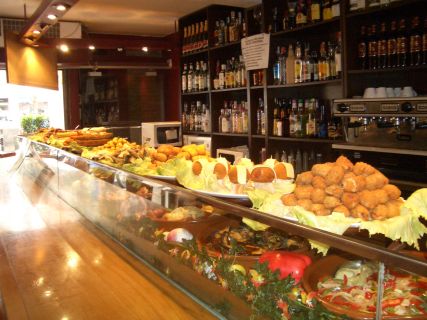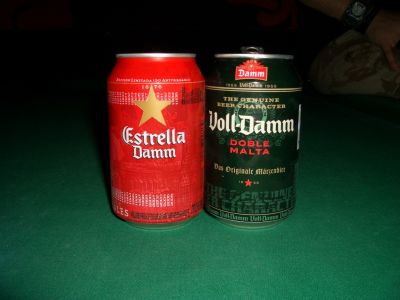When most American diners think of tapas, the sumptuous Spanish small-plate selections, they picture a romantic candle-lit room of terra cota walls, white table cloths, and a bill fit for Rey Juan Carlos. Indeed, that does typify the American Spanish restaurant. Wonderful yet unfilling food, followed by a collossal bill for truly shrimpy gambas al ajillo.
However, like most immigrants making the westward passage across the Atlantic, tapas left behind much humbler origins. Spain is a hot, fly-ridden place, especially in the south, and the tapas tradition came into being as an early way to guard against the flies and other buzzing annoyances that come with the warm climate. To protect a fruity glass of sangria or cerveza, bartenders would cover the top with a small piece of bread. Over time, some places would add a small bite of food to the "lid" — or in Spanish, la tapa. Everyone loves free food, so the tradition caught on.
 Spain's attitude towards tapas still bears the marks of this early history, though the food moved from the top of the glass to a plate. Tapas are often eaten standing up at a bar, and rarely cost more than two Euros (except in generally expensive places like Barcelona or touristy areas). They're not fancy-schmancy building blocks to a meal, and Spaniards will normally eat just a few tapas before heading out to the real meal at another location. While delicious food, and sometimes exquisitely prepared, at heart they are small, cheap snaks, made with the happy disdain for "healthy food" appropriate for the extremely fit nation that invented mayonaise.
Spain's attitude towards tapas still bears the marks of this early history, though the food moved from the top of the glass to a plate. Tapas are often eaten standing up at a bar, and rarely cost more than two Euros (except in generally expensive places like Barcelona or touristy areas). They're not fancy-schmancy building blocks to a meal, and Spaniards will normally eat just a few tapas before heading out to the real meal at another location. While delicious food, and sometimes exquisitely prepared, at heart they are small, cheap snaks, made with the happy disdain for "healthy food" appropriate for the extremely fit nation that invented mayonaise.
The closest aproximation in the US is the Taco Bell value menu. Tell that to your tuxedo-clad waiter next time he corrects your pronunciation of Estrella.



